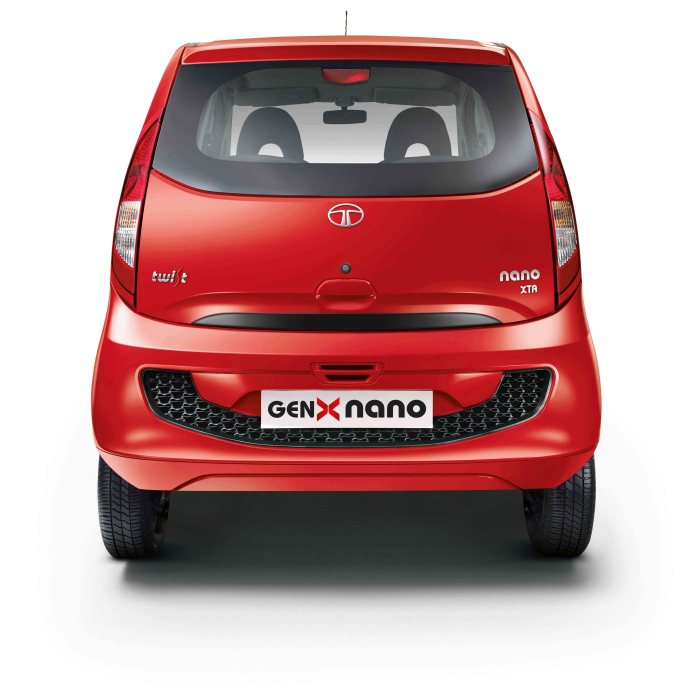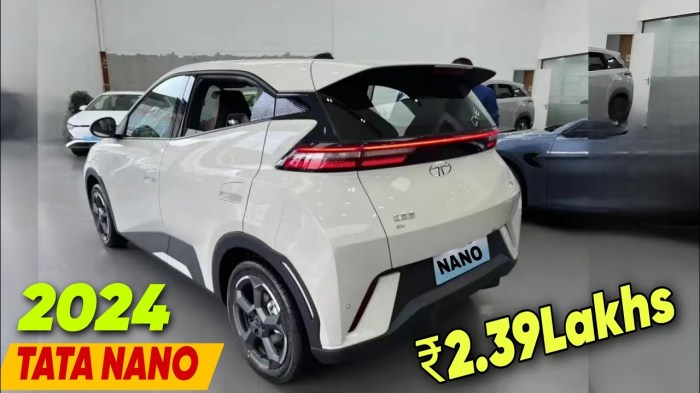Tata Nano New Car Price A Comprehensive Guide
Tata Nano: A Deep Dive into Pricing
Tata nano new car price – The Tata Nano, once touted as the “people’s car,” has had a complex journey in the Indian market. Its pricing strategy has been a key factor in its success and struggles. This article delves into the various aspects that influence the current and historical pricing of the Tata Nano, comparing it to competitors and analyzing the broader economic factors at play.
Current Market Price of the Tata Nano

Source: carblogindia.com
The Tata Nano’s new car price is often a point of discussion among budget-conscious buyers. Before you commit to any price, however, consider the broader question: should you pay sticker price for a new car? A helpful resource to explore this is should you pay sticker price for a new car. Understanding this can significantly impact your final Tata Nano purchase price and ensure you get the best possible deal.
The price of a Tata Nano varies considerably depending on the dealership and specific variant. Several factors contribute to this price disparity, including location, demand, and dealer-specific promotions.
| Location | Variant | Price (INR) | Availability |
|---|---|---|---|
| Mumbai | Standard | 250,000 – 275,000 (estimated) | In Stock |
| Delhi | LX | 275,000 – 300,000 (estimated) | Limited Stock |
| Chennai | XM | 300,000 – 325,000 (estimated) | Available on Order |
| Bangalore | Top-End | 325,000 – 350,000 (estimated) | Limited Stock |
Price variations between dealerships stem from factors like transportation costs, local taxes, and dealer margins. Dealers in high-demand areas might charge slightly more, while those in areas with lower demand may offer discounts to incentivize sales. Competition from other entry-level cars in a particular region also plays a role.
Compared to competitors like the Maruti Suzuki Alto and Hyundai Santro, the Tata Nano generally sits at the lower end of the price spectrum, though specific pricing depends on the variant and features included.
Price History and Trends of the Tata Nano

Source: vaahanwallah.com
Since its launch, the Tata Nano’s price has fluctuated. A line graph illustrating this would show an initial period of relatively stable pricing, followed by a period of gradual increase, and then potentially some periods of slight decrease or stabilization depending on market conditions. The graph’s overall trend might indicate a slow but steady upward movement, reflecting inflation and changes in production costs.
Key factors influencing these price fluctuations include changes in raw material costs (like steel and plastics), fluctuating fuel prices, and shifts in government regulations affecting automotive manufacturing. Economic downturns might have also led to temporary price reductions to stimulate sales.
Compared to the overall trend of the Indian entry-level car market, the Tata Nano’s price movements have generally mirrored the broader market trends, although its price point has always remained competitive within the entry-level segment.
Features and Specifications Affecting Tata Nano Pricing
Different Tata Nano variants offer varying features and specifications, directly impacting their price.
| Variant | Engine | Features | Price (INR – Estimated) |
|---|---|---|---|
| Standard | 624cc | Basic features, minimal accessories | 250,000 |
| LX | 624cc | Power windows, central locking | 280,000 |
| XM | 624cc | Air conditioning, upgraded interiors | 310,000 |
| Top-End | 624cc | All features included, possibly additional safety features | 340,000 |
Features like air conditioning, power windows, and enhanced safety features significantly increase the price. The inclusion of advanced technology or improved materials also contributes to a higher price tag. Compared to similarly priced competitors, the Tata Nano generally offers a more basic feature set, reflecting its position as a budget-friendly option.
Dealer Incentives and Offers for Tata Nano, Tata nano new car price
Dealers often provide various incentives to boost sales. These offers directly influence the final price a consumer pays.
- Cash discounts
- Exchange bonuses for old vehicles
- Finance schemes with low interest rates
- Extended warranties
- Free accessories or maintenance packages
These incentives can reduce the overall cost significantly. For example, a hypothetical scenario: a customer purchasing a Tata Nano priced at ₹300,000 might receive a ₹10,000 cash discount and a ₹5,000 exchange bonus, reducing the final price to ₹285,000.
Consumer Perception and Value of the Tata Nano

Source: co.in
Consumer perception significantly influences the Tata Nano’s pricing strategy. The initial marketing emphasized its affordability and fuel efficiency, targeting budget-conscious buyers. However, perceptions about its build quality and safety features have also played a role.
Marketing campaigns focusing on specific features and benefits can enhance the perceived value. For instance, highlighting enhanced safety features or improved fuel efficiency can justify a slightly higher price. Compared to competitors, the Tata Nano’s price-to-value ratio is generally considered favorable for budget-conscious buyers, but its lower perceived quality impacts the overall value proposition.
Impact of Economic Factors on Tata Nano Pricing
Various economic factors directly affect the Tata Nano’s price. Fluctuations in fuel prices, raw material costs, and government regulations all play a crucial role.
Increased fuel prices indirectly affect the car’s pricing as consumers are more sensitive to running costs. Rising raw material costs (steel, plastic, etc.) directly increase manufacturing costs, which are usually passed on to consumers. Government regulations, including taxes and emission standards, also impact the final price. Inflation generally leads to increased prices across the board, affecting the Tata Nano as well.
Economic policies that impact disposable income influence the affordability of the car for potential buyers.
FAQ: Tata Nano New Car Price
Is the Tata Nano still in production?
Production of the Tata Nano ceased in 2020. However, used models are still available in the market.
What is the average fuel efficiency of a Tata Nano?
Fuel efficiency varies slightly depending on the model and driving conditions, but generally falls within the range of 20-25 kilometers per liter.
Are there any significant safety features in the Tata Nano?
Safety features vary across models but generally include basic safety features like seat belts and some models had optional airbags.
Where can I find certified Tata Nano mechanics?
Authorized Tata service centers are the best place to find qualified mechanics for Tata Nano repairs and maintenance. You can locate these centers through the official Tata Motors website.




















